




March 2023 Vol - 1
Global Edition
Americas • Europe • Middle East & Africa • Asia Pacific
Managing Editor
 Sarath Shyam
Sarath Shyam
Consultant Editors
Art & Design
Branding & Marketing Partnership
Free Subscription
www.cxomagazine.com/free-subscription

Follow Us on www.linkedin.com/company/cxomagazinepage www.facebook.com/CXOMagazinePage

Contact Us
admin@cxomagazine.com
- 1
CXO Magazine (www.cxomagazine.com) is a digital magazine published by Connecta Innovation Private Limited. All rights reserved. The opinions expressed in the content and pictures provided are those of the authors. They do not purport to reflect the opinions or views of the CXO Magazine or any of its members and we do not assume any responsibility. The publisher does not assume any responsibility for the advertisements, its content, pictures, and all representation of warranties made in such advertisements are those of the advertisers and not of the publisher. CXO Magazine is a Free Subscription digital magazine strictly not for sale and has to be strictly for internal private use only. Publisher does not assume any responsibility arising out of anyone printing copy of this digital magazine in any format and in any country and all matters related to that. We are not liable for anyone modifying original information (content, trademarks, service marks, images, imagery, graphics, infographics, logos etc.) published on our website and posting that on website, social media, email, instant messaging platforms, chat groups etc.

Our world is full of stories. It is proven that companies that can tell their story effectively have a better chance at success. However, creating a good story worth retelling alone won’t guarantee success. We also need a perfect platform where we can present our story so that it will reach the right audience. CXO Magazine is here to help organizations and their CXOs share their stories, extend their market reach, and increase brand recognition.
To bring comprehensive coverage of today's thought leaders, business executives, inspiring personalities, and game changers, our maiden issue features Maria Villablanca on the cover. She is the Co-founder and CEO of The Future Insights Network, a fast-growing network of over 130,000 supply chain, manufacturing, procurement, and logistics leaders, and the host of the supply chain transformation podcast Transform Talks.
This issue also features stories of inspiring CXOs, including Karen Mangia (Vice President, Customer & Market Insights, Salesforce), Louis Têtu (CEO & Chairman, Coveo), Melissa Smith (Founder & CEO, Association of Virtual Assistants), Paul H. Jones FRSC (CEO, Bitrez) and Scott Truehl (Executive Vice President & Partner, Friede & Associates).
Global leaders like Cobus Steyn (International School Leader and Board Chair/ Advisor/Member for various Youth and Education Organisations/Schools), Dr. Santarvis N. Brown (Leadership Anthropologist), Mel Migrino (VP and Group CISO – Meralco/Chairman & President of Women in Security Alliance Phils), Nigel Green (Founder & CEO, deVere Group) and Mark Minevich (Chief Digital AI Strategist and Co-Chair, AI for the Planet) have shared their insights and opinions to make this magazine a comprehensive leadership guide.
Enjoy Reading.
Sarath Shyam


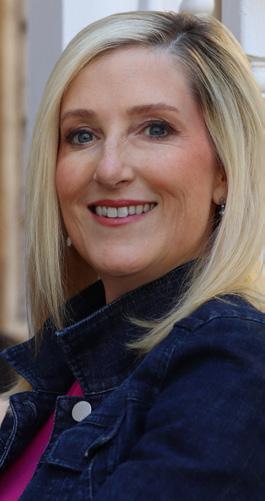


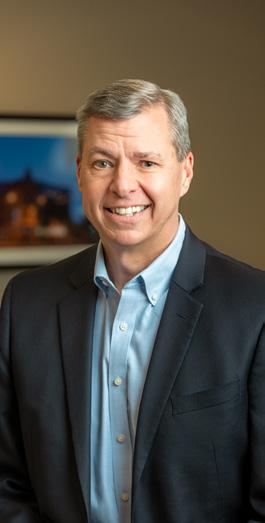

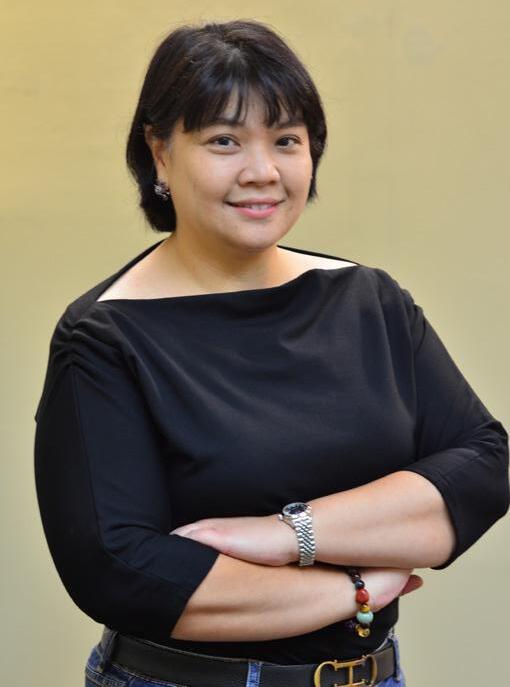
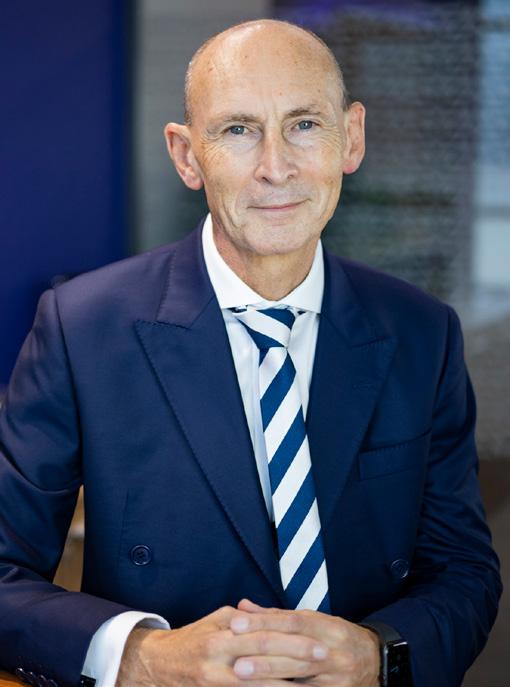

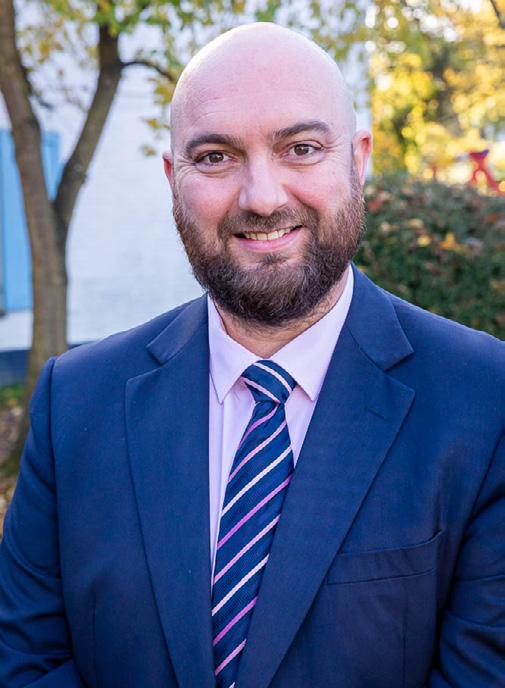
16
Mark
How is Artificial Intelligence Transforming Humanity in Every Dimension



Maria Villablanca is the Co-founder and CEO of The Future Insights Network, a fast-growing network of over 130,000 supply chain, manufacturing, procurement and logistics leaders and the host of the supply chain transformation podcast, Transform Talks. Maria interviews senior practitioners, thought-leaders, academics, and innovators from the world's most admired organisations to cut through the hype and noise around supply chain and business transformation. Her contributions to the supply chain industry have earned her numerous awards, including: 'Top 100 Women in Supply Chain, 2021' by Supply Chain Digital, 'Top 10 Most Empowering Business Women Leading Through The Change, 2022' by CIO Views Magazine, 'The Most Acclaimed Leaders in Supply Chain, 2022', by Insights Success, 'Elite League of Women In Supply Chain, 2022' by Success Pitchers, and ‘Top 100 Influential Women in Supply Chain, 2023’ by B2G Consulting.
In a candid interview with the team of CXO Magazine, Maria P. Villablanca sheds light on the evolution of the supply chain industry, the inspiration behind Co-founding her company, The Future Insights Network, her role as a podcast host of Transform Talks, and a lot more. Following are the excerpts from the interview.


How has the global supply chain industry evolved over the last couple of years? What are the top three supply chain trends to watch out for?

Supply chain always had an image issue; it was often seen as a cost-obsessed back-office function if seen at all, that is. The pandemic gave the supply chain industry the attention and recognition it truly deserves, and not just from the C-suite, but consumers too. It only took a few empty supermarket shelves for consumers to get properly acquainted with what supply chains are and how they affect their lives. Covid-19, along with the disruptions that followed, reinforced the notion that for many businesses, the supply chain was the invisible thread that held the business together and, therefore, a powerful source of competitive advantage. Those that had come to this realisation years ago had invested enough into strengthening their supply chains to preserve their place in the markets they operated in. The businesses that came to this understanding more recently painfully watched their forward-thinking counterparts rise while they crumbled. Some even paid the ultimate price and watched their businesses go obsolete. Having spoken to hundreds of supply chain leaders on the Transform Talks podcast and at our events, the most significant trend I've seen and continue to see is more investment into digital technologies that connect and orchestrate the end-to-end supply chain with traditionally siloed functions and for the businesses further along in their maturity, with the entire ecosystem of the business. I'm seeing a lot more collaboration with suppliers, vendors, customers, and even competitors, and digitisation enables this. I go into detail about all of the latest supply chain news
and trends in my newsletter, Transform Thoughts, which is based on the regular conversations I have with business leaders on the Transform Talks podcast. I encourage anyone that wants to stay up to date on what's happening in the world of supply chain and business to check it out.
Fail, fail fast, own up to your failures, learn, and make sure whatever you're working on is solving problems for either your superiors, your teams, or your customers
What inspired you to start Future Insights Network? As the Co-Founder & CEO, how would you define the growth of the company till date?
My business partner, Andrew Brown, and I set up The Future Insights Network with the view to
serve the supply chain industry with actionable, digestible, and thought-provoking content that cuts through the hype and noise of supply chain and business transformation. We set out to build a strong team that would help us become the preeminent destination for high-quality content and learning

opportunity for supply chain leaders and their teams. While we're not there yet, we're certainly on our way. In a short space of time, we've built a strong events portfolio and podcast and grown our network to over 130,000 leaders worldwide. We've
lent our platforms to leaders representing some of the world's most celebrated brands and thought leaders and numerous providers of cutting-edge supply chain solutions and services. We formed a powerful advisory board (The FIN Coalition) to

steer our content strategy and ensure we stay true to our primary objective of producing high-quality content for the industry we serve. Just recently, we launched FINeX, a series of executive training courses created in partnership with Professor
connections for hundreds of thousands of supply chain and business leaders.
What are some of the lessons you learned in your career that you would like to share for others to learn from?
Fail, fail fast, own up to your failures, learn, and make sure whatever you're working on is solving problems for either your superiors, your teams, or your customers. No decision or action you take for the purpose of ticking a box will pay the kind of dividends solving problems do, and if you're a woman, you better make sure the problems you solve are known. If you have any hope of throwing your hat in the ring for a promotion, be wary that the glass ceiling is very real and stronger than you think. You must be vocal about your achievements to have any chance of breaking it.
You are the host of Transform Talks. Can you brief us about your podcast series, the invited guests, and the topics that are tapped upon?
David Simchi-Levi of MIT, a world-renowned and award-winning thought leader. Our sights are set very high for the years to come. I may be biased, but I believe with our talented team, leaders, and organisations we work with, we're well underway in becoming the leading destination of content and
The Transform Talks podcast touches on every facet of supply chain and business transformation, from leadership and talent management to technology, ESG to geopolitics and disruption, next-generation planning to procurement, and so much more. It's focused on supply chain transformation mostly, but on occasion, I like to bring guests with unique backgrounds to the show, like members of the armed forces, cybersecurity experts, government officials, authors, psychologists, and the odd leadership coach too. I consider myself very lucky to be able to spend my days talking to some of the biggest names in the industry and beyond on various strategic, tactical, and big-ticket concepts. Having questioned and provoked hundreds of
The Transform Talks podcast touches on every facet of supply chain and business transformation, from leadership and talent management to technology, ESG to geopolitics and disruption, nextgeneration planning to procurement, and so much more
guests to this date, I've uncovered some pretty fascinating stories and insights that would just not be possible with a passive interview style. I think what makes Transform Talks special is my genuine curiosity. While I'm the host and face of it, I work with a talented team of producers devoted to making sure every episode is as valuable and thought-provoking as the last. I must admit, I used to get the odd telling off from them for giving in to my natural curiosity and deviating from the plan! I think we've come to realise this is how we can stay true to our mission of providing thought-provoking content for the industry.
I would say my greatest achievement to date is seeing some of the young talents I've trained and mentored become managing directors or CEOs of their own businesses. If you've met the Future Insights team, you'll notice they're relatively junior compared to me and my business partner. My passion for developing young talent goes way back, though. I've made a rule to train and mentor as many employees as possible over my career, and there is nothing that makes me happier to see those that put their careers in my hand go on to do exceptional things.
Learnability and the ability to unlearn is the key here. You have to ask questions to challenge the status quo permitted you're armed with the right information and tools. Experience is worth a lot, but so is the ability to think
outside of the box and the courage to challenge the status quo to foster the kind of innovation most supply chains lack, and desperately need. I think the ability to communicate effectively and manage people are also key to a successful career in supply chain management. Most people think management is about you, but it's really not. It's about getting results, through people. The best way to do this is by training your subordinates. Good managers get this and go on to become leaders for their perception of the role deviates from conventional, outdated thinking.
What piece of advice would you give to people who have a career in, or who are considering joining supply chain?
If you're considering it, stop. Become a Youtuber or Tiktok influencer instead. Just kidding. My advice would be to get stuck in. Supply chain is exciting, and a career in a supply chain-related profession can be very rewarding. But if you're going to get into supply chain or flourish in your supply chain organisation, just know your work will have a direct impact on not only your business but the world around you and more than you think. Supply chains not only keep the world moving, but I genuinely believe they can change the world. Figure out what kind of impact you want to have in the world if you want to have an impact at all, and remind yourself what it is every day. And if you're keen to develop your knowledge and skills to further your impact be sure to visit our website www.futureinsights.org to benefit from the various resources and help available to you.

Mark Minevich is a highly regarded and trusted Digital Cognitive AI Strategist, Artificial Intelligence expert, Global Social Innovation and Technology Executive, UN Advisor, Leading Author and Columnist, Private Investor/Venture Capitalist, and the principal founder and President of Going Global Ventures. He is an awardwinning technology executive and has published two books and over 40 articles on AI, Industry 4.0, IoT.
Mark is newly appointed Chairman of the Executive committee of AI for Good Foundation. Mark is a Chief Digital Strategist at the International Research Centre for AI, under the auspices of UNESCO. Mark is Sr. Advisor to Boston Consulting Group Boston Consulting Group. Currently, he serves as the strategic advisor and Global ambassador to the CEO and Chairman of New York based Amelia/ IPsoft Inc. Mark collaborates and advises large global enterprises both in the US and Japan (Hitachi). Mark is Advisory Partner to Canadian Growth Investments and Business Advisor to Infosec Global.
 Mark Minevich
Mark Minevich
What is the definition of leadership for you? As a leader, should one create more followers or leaders?
I believe that a leader should create more leaders, not followers. A leader is someone who inspires and motivates others to achieve their goals. A leader also has the vision and foresight to see the potential in people and help them to realize their own leadership potential. Creating more leaders ensures that there are more people working towards making the world a better place. Creating more followers does not necessarily create positive change, and can even lead to negative outcomes
if those followers are not inspired or motivated to achieve anything.
Share your experiential learning in this life journey.
One of the most important things I’ve learned in my journey is the power of networking. Building a strong network of supportive people is essential for any entrepreneur. These people can provide advice, mentorship, resources, and opportunities. They can also be a sounding board for new ideas and help you navigate through difficult times. If you take anything away from my journey, let it be

the importance of networking. It really is the key to success.
Having recorded experience as a technology executive and UN advisor, how would you describe global technology trends and innovation?
Technology is evolving at an accelerating pace and is becoming more sophisticated and integrated into our everyday lives. We are seeing a trend towards climate-friendly and sustainable technologies, as well as a move towards more personalized and bespoke solutions as a result of

the inception of Web 3. Concretely, we are seeing steady development in the fields of carbon capture, climate risk analysis and management, as well as distributed ledger technologies.
How have artificial intelligence and technology practices changed in the last decade?
There has been a shift from general-purpose AI technology that can be used for a variety of tasks, to more specific and targeted AI applications. This is in part due to the increasing amounts of data that are available,
as well as the development of new methods for training and deploying AI models. We are also seeing a move away from rule-based systems towards more data-driven approaches, which is enabled by the increased compute power and storage capacity that are now available.

With AI innovation across industries, organizations can better understand all aspects of business strategy, risk, and ethics. How can they make informed decisions about AI applications by assisting them with the deployment of AI? There are a number of ways in which organizations can make informed decisions about AI applications. Firstly, they need to ensure that they have a clear understanding of their own business goals and objectives. They also need to understand the state of the art in AI technology and how it can be applied to their specific domain. Additionally, they need to consider the ethical implications of AI and make sure that their AI applications are aligned with their values. Finally, they need to think about the risks associated with AI and put in place measures
to mitigate these risks. After taking all of these factors into consideration, organizations can then start to deploy AI applications.
How do you foresee AI technology trends impacting the global business landscape?
We are in the midst of one of the worst recessions in history, and AI is playing a major role in helping organizations to survive and thrive during these challenging times. AI is being used to automate tasks, improve decision-making, and drive efficiencies across the board. We are also seeing a move towards using AI for predictive maintenance and forecasting, as well as for managing supply chains and logistics. In the future, AI will
become increasingly ubiquitous and integrated into all aspects of business. For example, we will see AI-powered chatbots and digital assistants becoming the norm, and businesses will need to adopt AI in order to remain competitive. Personalization of the customer experience will also become more important, and AI will play a key role in enabling this.
How do you leverage your AI knowledge and innovation efforts to expand capabilities and positively impact social innovation and climate change?
I am very passionate about using AI for good and I believe that it has the potential to make a positive impact on social innovation and climate
We are seeing a trend towards climate-friendly and sustainable technologies, as well as a move towards more personalized and bespoke solutions as a result of the inception of Web 3

We are seeing a trend towards climate-friendly and sustainable technologies, as well as a move towards more personalized and bespoke solutions as a result of the inception of Web 3
change. I am currently involved in a number of initiatives that are aimed at using AI to help solve some of the world’s most pressing problems. For example, The AI For Planet Foundation is a non-profit organization, which is using AI to help tackle the global climate crisis. Currently, we are working on defining AI-driven solutions that can aid in the transition to a low-carbon economy. Artificial intelligence has a tremendous number of use cases in climate change, including environmental monitoring, carbon trading, and renewable energy. For example, smart grids that use AI can help to optimize energy usage and reduce wastage, while also increasing the integration of renewable

energy sources. Additionally, AI can be used to develop new materials and processes that are more environmentally friendly.
What challenges have you faced in your business journey? Do you think luck or hard work is more important?
For years, I approached my assessments, reviews, and pitches with great bluntness. I would tell my investors and business partners plainly, “This is how it is — period.” However, I have since learned that the world is more complex than that. We need to deliver things in a way that doesn’t cause unnecessary stress but helps to set confidence and expectations. That being said, I believe that hard work is a major key to success. It’s not just about working hard though; it’s about working smart.
You have to be efficient and utilize your time in the best way possible.
You are a strong advocate of companies investing in the Metaverse. How can enterprises increase their chances of success in the Metaverse and position themselves as leaders in this emerging market?
The Metaverse is a virtual world that is created by the convergence of multiple online communities and 3D environments. It is a natural extension of the internet and will eventually become the dominant platform for all human activity. Enterprises need to start investing in the Metaverse now if they want to be leaders in this emerging market. There are a number of ways

The impact of digital innovation and artificial intelligence on society, business, and government is a passion of mine. I strongly believe that these technologies can be used to improve our world and make it a better place for all

in which they can do this. Firstly, they need to create a presence in the Metaverse and start experimenting with different applications, such as virtual reality, augmented reality, and 3D commerce. Secondly, they need to build a strong team of experts who are knowledgeable about the Metaverse and the technology behind it. Finally, they need to create partnerships with other companies that are active in the Metaverse. These partnerships will be essential for driving innovation and growth in the Metaverse.
Web3 technologies are necessary for enterprises to stay ahead of the curve. How can they use Web3 to gain a competitive edge?
Web3 technologies are the next generation of internet technologies that are based on the principles of decentralization, trustlessness, and security. They have the potential to radically change the way in which enterprises operate and give them a competitive edge. Enterprises can use Web3 technologies to build decentralized applications (DApps) that are more secure and efficient than traditional centralized applications. Additionally, they can use Web3 to create new business models that are not possible with centralized systems. For example, they can use blockchain technology to create decentralized marketplaces where buyers and sellers can trade without the need for a central authority. This will allow them to cut out the middleman and save on costs.
is a passion of mine. I strongly believe that these technologies can be used to improve our world and make it a better place for all. Specifically, I am passionate about using AI for good, and have been involved in several initiatives to use AI for social good. I am also passionate about digital government, and feel that digital technologies can help government to be more efficient, effective, and responsive to the needs of citizens.
No more rat race. I literally wake up every day with a smile on my face. I find that doing what I want and being in control of my own life makes me a lot happier. Imagine deciding to go anywhere and doing whatever you want as long as you create value. Who wants to shlepp when you could enjoy life to the fullest. I figured out that art of living a fulfilling life is trying things that are way outside of their comfort zone and enjoying it.
I believe that it is important to be a tiger, not a rat. I think that too often, people get caught up in the rat race and forget what is really important in life. Being a tiger means being focused and driven, and always striving to be the best that you can be. It also means being aware of the bigger picture and making sure that your actions are in line with your values and goals. Being a rat means being afraid to take risks, and always playing it safe. It also means being focused on the wrong things, like money and status, instead of what really matters in life.
The impact of digital innovation and artificial intelligence on society, business, and government
What has been your inspiration? Tell us about your desires and goal.
Being the son of a sewing machine mechanic who was born in a small village in Belarus, I am
immensely proud of my dad and everything he has accomplished. He is my inspiration because he always fought for what he believed in and never gave up on his dreams. Thanks to him, I have been able to experience the benefits of the American dream. I hope to continue his legacy by inspiring others to never give up on their dreams and to always fight for what they believe in.
Mention your achievements in professional and personal lives; state the awards & accolades received to date that define your accomplishments.
I was recently named as one of the 20 Most Followed AI Influencers of 2021 by Engati, and now serve as the newly appointed Chairman of the Executive committee of AI for Good Foundation. I am also a Knowledge Partner and Co-Chair of the Steering Committee for the AI for the Planet Alliance collaboration with UNDP, UNESCO and BCG. Forbes named me as one of the Leaders to Watch in 2017, and I have received the Albert Einstein Award for Outstanding Achievement and the World Trade Leadership Award from the World Trade Centers and World Trade Center’s Association.
Tell us about the network of professionals and partners you have created. Can you shed some light on a few initiatives or techniques you are incorporating?
Currently, I am Co-Chair of the Steering Committee for the AI for the Planet Alliance, Chair of the Executive Committee for the AI for Good Foundation – in collaboration with UNDP, UNESCO and BCG as a Knowledge Partner based in Paris, as well as Senior
Advisor to Boston Consulting Group and BCG Gamma. Through these various positions, I have been able to create a strong network of professionals and partners who are all working towards using AI for good –meaning creating social and economic value while also protecting our environment. We are working towards developing a set of best practices for AI applications in the environmental sector, creating an online platform that will allow businesses and organizations to find AI solutions for climate change, working with businesses and organizations to develop AI pilots that focus on climate change, conducting research on the impact of AI on the environment and climate change, and educating the public about AI and its potential to help address climate change.
What are the different verticals that you have worked with so far? How do you stay abreast of the periodic technological and industry changes in a constantly evolving world?
I have worked with a wide range of businesses and organizations across a variety of industries, including the telecommunications, automotive, aerospace, defense, healthcare, banking, and insurance sectors. I have also worked with governments and NGOs. I stay abreast of the latest industry changes by attending conferences and events, reading industry publications, and following thought leaders on social media. In addition, I am a member of several professional organizations, such as the World Economic Forum, the G20 and B20, GFCC, US Council on Competitiveness,
which enable me to stay up-to-date on the latest industry trends.
As a successful business leader, what would your advice be to youngsters aspiring to become business leaders and entrepreneurs in the future?
My advice to the younger generation that is aspiring to become business leaders and entrepreneurs in the future is to always be learning. Technology is changing at an exponential rate and it is important to stay up-to-date on the latest trends. Additionally, it is important to be adaptable and agile in order to succeed in today’s rapidly changing world. Finally, it is important to have a strong network of professionals and partners who can offer advice and support.
I am currently working on a number of initiatives, including the AI for the Planet Alliance and the AI for Good Foundation. I am also working on a book on Preparing for a Human Centric Digitally Driven Future, which focuses on the importance of people and values in the digital age.
I recently had an interview with CDO magazine, in which I suggested several key action items for businesses. First of all, companies must shift from automation of their existing processes to digitizing their operations. In addition, companies shouldn’t just adopt new technologies – they need to focus on the customer experience via personalization, mobile interactions, and data-driven marketing. Lastly, companies should invest into sensor tech and the Internet of Things to obtain real-time insights.
I stay abreast of the latest industry changes by attending conferences and events, reading industry publications, and following thought leaders on social mediaKaren Mangia Vice President, Customer & Market Insights, Salesforce

For most people, a successful career can be measured by the positive impact and energy created around the workplace and people. It is imperative that strong leadership is displayed to enhance team and individual achievements and effective organizational performance. And it is believed that diversity within the administration and workforce encourages new and different perspectives in the organization that inspires innovation, boosts creativity, and enhances productivity. This finally translates to better decision-making resulting in greater success for the organization. This diversity can be introduced through the permeation of women within the corporate environment, a gradual incline we have witnessed over the years.
One such self-built leader with a seat at the decision-making table is Karen Mangia,
Vice President, Customer & Market Insights, Salesforce. Her work at Salesforce primarily focuses on devising personal and professional success strategies. She engages with key customer accounts and collaborates to develop innovative strategies that address their critical business challenges. Karen helps translate feedback into actions to increase customer retention, growth, and satisfaction. “Each day, I am fortunate enough to spend time with individuals and organizations all over the globe who are changing the world, innovating in unlikely ways, reworking work, and redefining success. When I have the opportunity to use my platform to showcase their ingenuity and innovation, I feel excited. Sharing thought leadership is core to my role,” opines Karen.
Karen considers maintaining meaningful relationships with colleagues and customers
one of the biggest challenges faced in her role. Salesforce now has over 74,000 employees globally, with customers growing exponentially. She adds, “Relationships are critically important, and the more we grow, the more we must be purposeful about knowing who we serve, why we serve, and the greatest good that could come of that service.”
Before Salesforce, Karen held various leadership roles in sales and customer experience at Cisco. She regards one of her most rewarding experiences till today as

leading the transformation. She recounts, “We changed how we listened to our customersfrom providing research results to offering our customer listening skills as a service to the organization. ” Karen and her team at Cisco also lead the company through a growth journey to invest more time and money in diverse-owned and operated businesses. Additionally, Karen commenced her career at AT&T, first in project management and then in a variety of sales roles.
“Customer engagement and advocacy (giving people a platform and helping to amplify their
voices) have been constants throughout my career,” says Karen.
She has not limited herself to just these roles but instead expanded her reach and knowledge
You (Wiley, 2020), and the Wall Street Journal Best Seller, Success From Anywhere: Create Your Own Future of Work From the Inside Out (Wiley, December 2021). “I’ve been fortunate to write four books, hundreds of articles and blogs, and deliver a myriad of keynotes and workshops. Giving others a platform to share their voices inspires me. I also serve on our company’s Racial Equality & Justice Taskforce, Purchasing Subcommittee, which is the most meaningful work I’m fortunate to do,” says Karen.
For as long as Karen can remember, she has loved stories, from reading them to writing them to discovering them. She identifies stories as her true North Star, personally and professionally. She attributes part of her decision to pursue writing to her college professor, Bob Papper. He was known to be notoriously exacting. Karen would attend his telecommunications news classes and worked as a research assistant for him.
further, having authored four books; Success with Less: Releasing Obligations & Discovering Joy (Marie St. Press, 2016), Listen Up! How to Tune in To Customers, And Turn Down the Noise (Wiley, 2020), Working from Home: Making the New Normal Work for
Her job was to administer the annual survey he sent to members of the Radio & Television News Directors’ Association (RTNDA). This would require calling non-respondents to administer surveys over the phone. She would then correlate responses, analyze trends and search for the storyline. “That’s not news,” she can hear him barking in his gruff voice even now. “The first three letters in news are new. And what you’re telling me isn’t new.” Then he would slam the metal desk drawer that contained his shelf-stable stash of Dinty Moore microwave meals. That was his not-so-subtle way of telling me to get back to work,” remembers Karen.
Before Salesforce, Karen held various leadership roles in sales and customer experience at Cisco. She regards one of her most rewarding experiences till today as leading the transformation
Professor Papper authored six articles each year based on his and Karen’s findings for the RTNDA magazine. Together, they co-authored an article about trends in television internships. That was Karen’s first professional publication. They submitted version 67, which she holds dear to her heart and still has a copy of that magazine. She fondly recollects, “I can’t tell you how many stories I’ve captured and shared since then. I can tell you that if you open the kitchen cabinet next to my refrigerator today, you’ll discover a blue mug with faded yellow stars. Professor Papper presented me with the mug after we shared our research findings
with a live audience. He saved the speech. His coaching was his caring. The mug merely commemorated his caring.”
All in all, Karen pens down three of her key milestones, the first one being her first job with AT&T, which shaped her career and gave her a lifetime of good friends. “I’m fortunate that the first opportunity at AT&T resulted in creating some of the best friends of my adult life. My colleagues were kind, caring, considerate, helpful, and fun. That can be rare in Corporate America,” elucidates Karen.

She can pin down her second milestone as the personal ordeal she overcame at 33. Karen faced an undiagnosed illness that prevailed despite referring to a team of five doctors. Despite diet and exercise, she gained weight, lost color in her skin, her eyes changed color, and her energy drained away. Karen continued working through the confusion and ended up sacrificing her health, relationships, and herself in the bargain. In her last-ditch attempt to find answers, Karen visited an unorthodox doctor who helped her face the crossroads she was at in life, identify the childhood reason for her poor health, and ultimately turn her life around. “The key to my success wasn’t tied to my determination, ambition, or relationships. I needed to simplify and adopt a powerful new formula for creating a life without regrets. In my first book, I have detailed the three-step formula that transformed my life, my relationships, and my health, along with thousands of readers. I am living proof you can move from burnout to breakthrough,” advises Karen. And to anyone seeking advice and guidance to achieving success, she adds, “Success is personal, and when you discover and define what success means to you, then you can invite success to show up moment by moment. I’ve discovered that when I’m clear
about what success means to me, I’m free of the influence of others’ expectations. When you accept and approve of yourself, others will too. Or maybe not, and you’ll still be OK either way.”
Her third most outstanding achievement is publishing her three books during a global pandemic. She reveals, “When I was grounded from global travel, I leveraged the opportunity to share thought leadership in new ways. Blogs and books gave me purpose and an opportunity to be of service during a time of significant global disruption and transition.” She attributes her focus, a sense of purpose, and relentless time management to generous people that helped her achieve this particular milestone.
Moving higher along her growth trajectory, Karen is currently excited about her new show, 'Success from Anywhere.' The premise is, what would happen if one could change the game of life together? The series shares strategies to unlock success from unlikely sources of inspiration. Karen signs off with a snippet of her near future, “Also, I’m conducting an ongoing series of oneon-one interviews about how employers and employees are reworking work together.”
Moving higher along her growth trajectory, Karen is currently excited about her new show, 'Success from Anywhere.' The premise is, what would happen if one could change the game of life together?
Dr. Santarvis Brown is a Scholar and Changemaker who brings 20 years of experience in the education space. He is the President of Edu-Techure LLC, an education consultancy. He has served in the K-12 and higher education spaces well. He began his career as an executive director for an educational nonprofit that provided academic enrichment in low-income areas in the Overtown community. He served as a middle school classroom teacher, and principal. He also served as the First African American Director of the Seminole Tribe of Florida Department of Education. In addition to holding the rank of full professor, he has served in administration as a Department Chair, and Associate Provost/Chief Academic Officer. He currently teaches Leadership at The University of Virginia and Cornell University.
 Dr. Santarvis N. Brown
Dr. Santarvis N. Brown
Ask any person of authority, “Are you a leader or a manager?” You will likely end up with as many different responses as you do the number of people who you’ve asked. That’s because we all look at these roles in different ways.
Generally speaking, a leader is anyone who has the interest of a company in mind. A manager is someone who leads a specific area or department. It even gets more confusing when companies put in place different namedhierarchy for levels of leadership. Think lead, supervisor, foreman, manager, steward, and the list go on.
I remember talking to a colleague of mine who once told me that he’d gone from one company
as a senior manager to another company as a senior supervisor. When he started at his new job, he thought he was taking a lesser position. It turns out that at his new company, they didn’t use the terminology manager. Supervisor is what his previous company would have called a manager. For some reason that company felt the term manager was more authoritarian than supervisor. Confusing, right?
But this is a reality when it comes to leadership of any kind. In an effort to build support and morale, companies will often change title names in order to create a new – better – environment. It rarely works. I’d go so far as to say, it never works. Name change is not the problem with a company that has low morale. Management is the problem. And this is where we discuss the real difference between leadership and management.
Regardless of the title that a company places on the hierarchal level of a person, most people understand that a manager manages something. That something could be a mailroom, a department, a shift, or the four cubicles in the corner of the office. Whatever it is, a manager tends to manage people and activities in a specific area. That’s fine. However, the way that we gauge success for a manager is often purely dependent upon how that manager performs over the area and people they manage. In fact, the manager could be a lousy people-person, but if the metrics are hit in that small area, the manager is considered good-great-successful.
What happens if a 1st and 2nd shift production manager are doing amazing, but suddenly the third shift production manager can’t seem to hit their metrics? Does that mean the 3rd shift production manager is just not doing well? If you said yes,
Regardless of the title that a company places on the hierarchal level of a person, most people understand that a manager manages something
then you would be like most companies who would replace that 3rd shift manager. But I would argue that of all of the managers, it is likely the 2nd shift manager who is doing a poor job by not setting the 3rd shift manager up for success. And it is the 1st shift manager who benefits from the skills of the 3rd shift manager who sets the 1st shift manager up for success.
How do I know it is the 3rd shift manager who is the leader among these three people? Because it is the 3rd shift manager who is thinking about how the company will succeed as a whole. That is the difference. This 3rd shift manager may be in the same role, but sees it much more broadly. This person does not see the manager as managing a department, or shift, or four cubicles. This person sees the manager as someone who helps others succeed even if they are dealt a difficult hand.
Companies around the world struggle because they perpetuate the ideals of a manager, not a leader.
As I hope I’ve demonstrated, a name does not make a leader. In fact, a name may actually diminish a leader’s role. How many times have you heard the statement, “management is horrible, but I love my leader?” It’s a popular statement and people often subconsciously separate their own leader from the rest of the company’s management. That is because a good leader shows the characteristics that employees look at as successful.
Good leaders understand that no leader can succeed if their employees don’t succeed. By
recognizing employees (and colleagues) for their suggestions, actions, and achievements employees will feel appreciated. Imagine, if in the example above, that 1st shift production manager publicly acknowledging that their success came from the 3rd shift team more than their own efforts.
If you want someone to feel respected, just close your mouth and listen. Leaders learn to listen and guide others to success rather than ordering people around. Listening to the “boots on the ground” will lead everyone in a positive direction. But a good listener does not just hear from their own team. A good listener looks at the whole picture to identify where that leader’s team can improve the whole of the company.
Just like in the earlier example, the 3rd shift production leader showed his team how to set others up for success. Sometimes – oftentimes – that means putting aside your personal metrics to improve another team’s metrics. This is probably the easiest and most effective way to improve the whole of a company, yet receive the least recognition.
On the surface, evaluating a leader from a manager seems obvious. Yet, the implementation is excessively difficult. First off, leaders need to toss their old friend “Ego” out the door. A leader has the ability to put their personal interests aside while focusing on the interests of the whole.
Imagine doing everything to help everyone else and receiving nothing in return. If you can do that, then you already know what it is like to be a great leader. Congratulations.
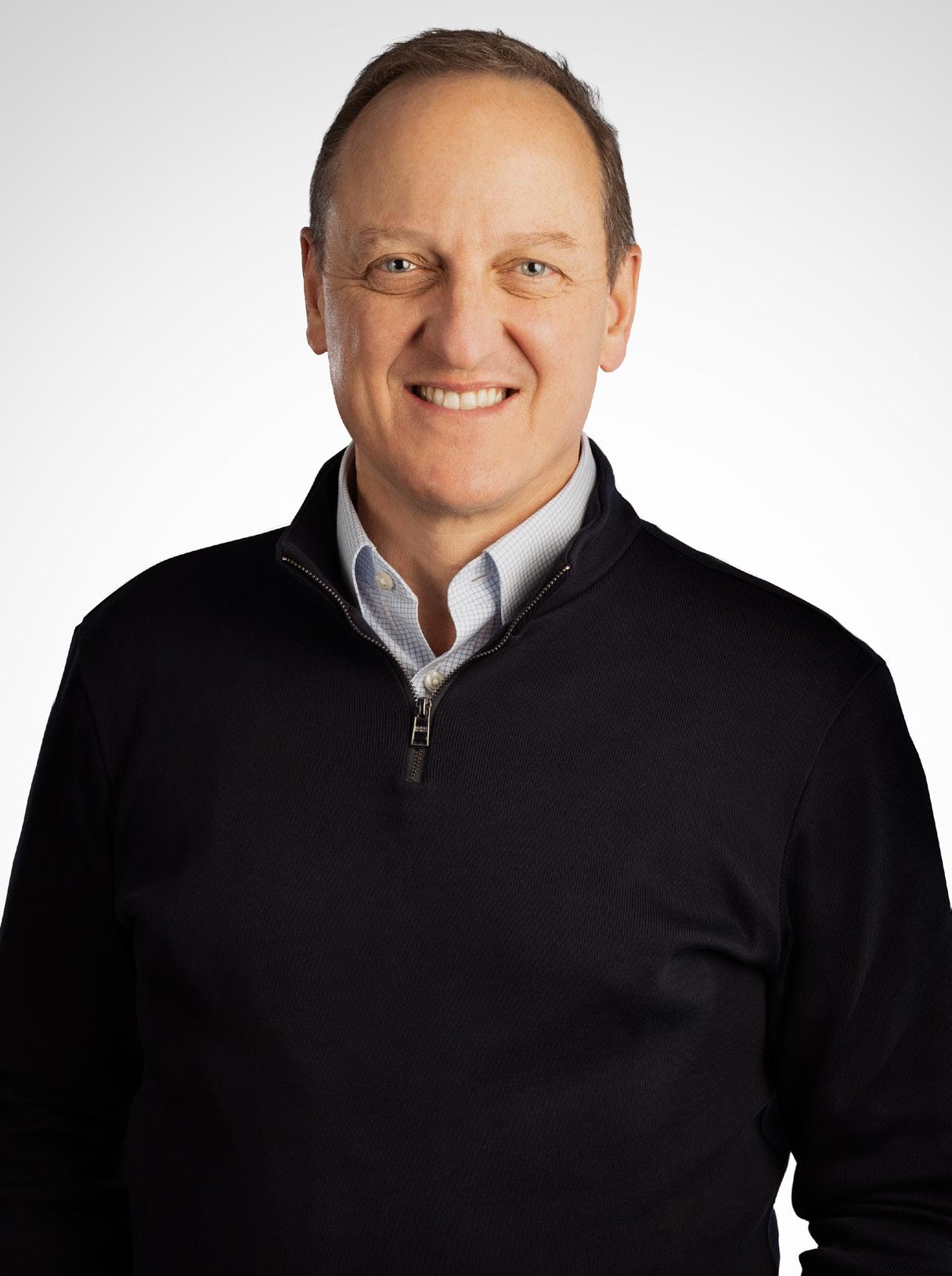 Louis Têtu
Louis Têtu
As the digital transformation wave washes over us, AI is one of the advancing technologies at the very pinnacle of this transformation. The emergence of AI technology enabling services propels next-gen AI-powered search with more relevant and personalized results. This translates to achieving business goals, superior customer satisfaction, increased revenue, and optimized conversion rates.
Louis Têtu, CEO and Chairman of Coveo, has made significant advancements in this domain. His dedication has helped Coveo become one of the leading companies doing AI research in commerce, service and workplace applications. “We make search, data, and AI more accessible, so every business, not just tech giants, can provide relevance at scale with the power of AI,” elucidates Louis.
Before joining as CEO in 2012, he was an early investor of Coveo. As he joined forces with the organization, his first step was to revisit the business plan. He then began architecting a multitenant cloud offering. Having gained a complete market understanding, he firmly believed that subscription models would overtake perpetual licenses. He also saw the movement toward AI. In July 2019, announced the acquisition of Tooso, an AI-based digital commerce engines company specializing in e-commerce.
Additionally, in October 2021, Coveo acquired Qubit, an AI-powered personalization technology for merchandising teams, thus displaying the organization’s commitment to digital commerce. “Large world-leading technology companies are using Coveo to power relevance, but we aren’t stopping there.
Incepted in 2005 by Laurent Simoneau, Richard Tessier, and Marc Sanfaçon, Coveo today commands quite the market presence


We have partnered with these organizations, including SAP, Salesforce, Adobe, and many more, to expand our innovative capabilities,” informs Louis.
He explains how he and his team believe AI is at the epicenter of all digital experiences,
which is critical in the experience economy. Coveo believes that technology is only part of the solution, so the organization helps cultivate a collaborative environment between each other, their partners, and customers to provide the best experiences. This approach brings Louis pride in his customer success team as much as his R&D team, which is a department that constitutes 40 percent of the workforce. “We have been immersed in AI for more than a decade and have had the unique advantage of working with some of the largest data stacks of global enterprises. This allowed
us to mature very quickly. To do what we do at scale requires maturity,” opines Louis.

Delving deeper into the thought process behind this approach, Louis explains how he feels Coveo must foster a culture of innovation, keeping two things in mind; creating an environment that encourages collaborative and high-velocity ideation and iteration and keeping the innovation highly connected to customers through their technologically-driven devices. Coveo aims
to create a collaborative environment where obstacles to communication and politics are eliminated so that the workforce can direct their focus on finding the truth, as opposed to fighting over who is right. Louis believes that hierarchies can create obstacles to creativity and innovation. So, instead, he helped Coveo generate an environment whereby everyone could contribute, submit ideas, and challenge the status quo.
“The notion of risks with experimentation is really important. It’s a constant reminder of why we hire people to tell leadership what to

Coveo is part of the 1% Pledge where one percent of the company’s profit, time, product, and equity is dedicated to helping vulnerable communities access knowledge and education
do versus telling employees what to do. I firmly believe that as a leader, it is not my job to tell them what to think - but to think about what people tell me. And make no mistake - this is a constant challenge. I like to think one of the most important things a leader can do is 'decant the truth'; fostering an environment of unfiltered conversations,” adds Louis.

Incepted in 2005 by Laurent Simoneau, Richard Tessier, and Marc Sanfaçon, Coveo today commands quite the market presence. In 2017, Coveo opened doors to its Montreal office with 25 employees. Since then, well over a hundred new employees have joined the Montreal office, which has expanded onto additional floors of the historic Gare Windsor building. Coveo has also opened offices in Quebec City, San Francisco, New York, and London. As of early 2023, the company possesses over 750 in house and remote employees around the world. The company

attributes a core part of its success to its employees and, as such, believes that the workforce's wellness should be prioritized. Coveo values work-life balance and promotes transparency while simultaneously acknowledging the success of others. “We believe it’s ok to fail, but fail fast and adjust. This helps to stimulate innovation and research. In my experience, employees shine brightest when they share common goals and beliefs beyond a paycheck. At the end of the
day, when you have great people engaged in a common purpose, and you respect everyone in the same way, your innovation and success rates will follow,” says Louis.
He also reveals how Coveo has stitched investing in its community and local causes into the very fabric of the organization’s values and beliefs. Coveo is part of the 1% Pledge where one percent of the company’s profit, time, product, and equity is dedicated to helping

Louis envisions continuing to revolutionize this sector by leveraging his skills, team of professionals, and comprehensive suite of innovative solutions and services
vulnerable communities access knowledge and education. Louis adds, “This commitment has been an important way to attract talented people, customers, and partners who have the same desire to build a better world. And that’s helping us build a stronger business and a brighter future.”

Louis’ journey as a leader, he reveals, has been a fruitful experience. And while he has been fortunate in his 34-year-long career to hit all the major business milestones like IPOS, financing, and growth, the shared experiences with his colleagues and employees have been most memorable. “We have a purpose and a great group of colleagues, all of which make a great culture and destination for people who want to be a part
of that. With over three decades in business, my typical day revolves around thinking about how to create more value for all our stakeholders.
I feel a responsibility to the wellness of our people while ensuring complete customer delight and, finally, our shareholders, in that order. It’s people first. You can’t do well if your people aren't well,” proclaims Louis.
Today, Louis and his team are making significant advancements in this domain. “It is also important that everyone has a chance to recharge themselves. For myself, my family and I spend time together at our lake house in Quebec,” he reveals. Louis envisions continuing to revolutionize this sector by leveraging his skills, team of professionals, and comprehensive suite of innovative solutions and services.
Cobus Steyn has been leading international schools in various contexts and positions since 2011, specialising in strategic direction, school improvement and accreditation, and governance structures. He is currently attending the Doctoral College of the University of Bath, specialising in International Education Leadership and Administration. Mr Steyn also serves the international school community as an Accreditation Team Member and a Cambridge Assessment Specialist. As a citizen of a Global South country, Mr Steyn is enthusiastic about transformation in international education which would lead to a more inclusive learning experience for international school students, and developing young leaders. He is also very passionate about education in Africa. Over the course of his career, Mr Steyn has lived and worked in six countries on three continents.
International School Leader and Board Chair/Advisor/Member for various Youth and Education Organisations/Schools
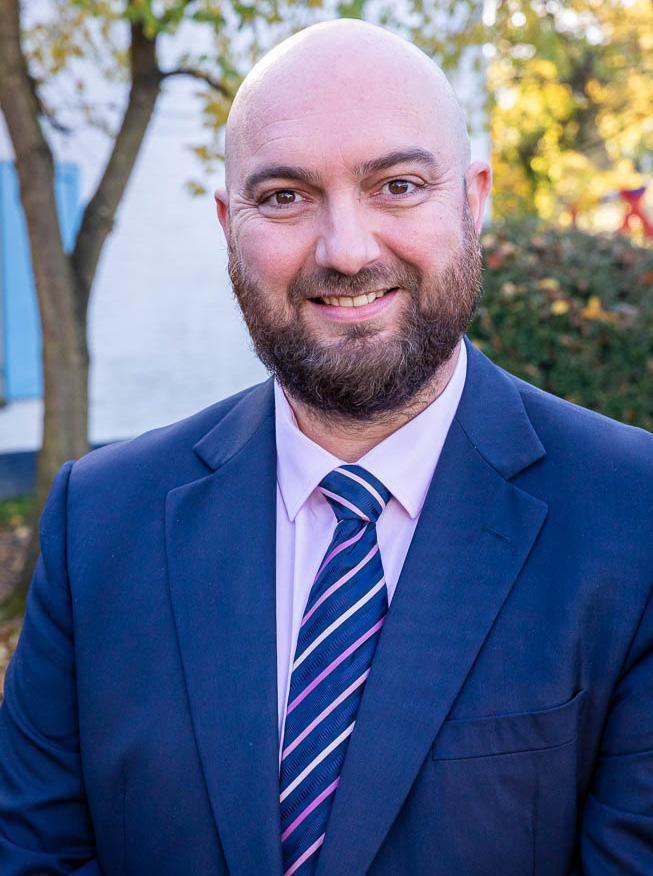
One of the aspects of educational leadership I particularly enjoy is the mentorship of new leaders, be it students or staff. Empowering young or new leaders to enable them to realise their potential to affect change is an enriching experience. There are many opportunities for teachers to engage with educational leadership. These can be at a curriculum level, pastoral level or whole-school level.
There is ample literature to support that many writers who engage with educational leadership have blurred the lines between leadership and management. For this reflection, I will make a clear distinction between the two in as simple a manner as possible. Managers manage a process and follow a set of policy documents to ensure that whichever process they are managing
is successful. They are not accountable for a failed process due to misconceived procedural policies and do not affect change or growth. On the other hand, leaders affect change, accept responsibility, and have a clear goal that they work towards. They work, serve, empower, change and grow institutions.
Newly appointed leaders often research different leadership styles and wonder which they should adopt. Which is better? Should I be a transactional leader? Should I follow a distributed leadership structure with my team? The short answer is all of them!
Educational institutions are incredibly dynamic environments. This is one reason why they are exciting institutions to work for. No day is the same as another. With the dynamic environment comes a constant flux of leadership requirements.
As schools are so complex and in constant change, there will be situations requiring a leader to dive into their bag of skills and use the correct framework for the institution to develop, grow, and improve
Add to this the strategic direction the school is undertaking, where on its accreditation cycle it is, or what threats or opportunities it is facing. To a great degree, these will determine what style of leadership and type of leadership distribution is required. A lot also depends on the organisational culture of the school, its unique context, or the composition and experience of its teachers. For a new leader to only focus on one type of leadership style is a folly. The more opportunities they have to engage in different styles and techniques, the more they are able to hone these skills to better serve their stakeholders – students, parents, teachers and boards.
To help illustrate my point: if a school is developing its next strategic plan, then there has to be stakeholder voice reflected in the process. This is an ideal opportunity to follow a distributed leadership process by empowering middle leaders to accept responsibility for a specific area suited to their strengths, be it facilities, infrastructure, teaching and learning etc. These leaders can then engage in a process with their team to propose direction and change, thus enabling all stakeholders to have a shared, strategic vision.
For example, there could also be a threat. During the recent pandemic, many stakeholders looked at executive leadership to assume an autocratic role and guide the school community through challenging times. Usually, when the stakes are high and there is a healthy level of trust in leadership, a community may feel more comfortable with leadership dictating the next steps and process to ensure that all members and stakeholder groups are guided. This is often one of the more challenging roles to accomplish as a leader.
Another scenario could be that a school is in mid-cycle of both strategic plan and accreditation, allowing for transactional leadership to be put into practice. There are always tasks and goals which require completion but there may not be a lot of enthusiasm from the community to engage in this. Middle leaders can put in place a series of goals and targets and assign responsibilities.
While there may be some debate exactly as to how many leadership styles are available for new leaders to engage with, this is, to my mind, a moot point. New leaders should be exposed to as many styles as possible and find opportunities to develop the skills associated with each. As schools are so complex and in constant change, there will be situations requiring a leader to dive into their bag of skills and use the correct framework for the institution to develop, grow, and improve.
For me, the most important thing for a new leader to remember is that all leadership styles in a school have to be grounded on the notion of service to your community. This does not mean service leadership, but rather selfless leadership at the core of your motivation and approaches. As you are shaping the lives and futures of students, their interest and development must be at the heart of your choices, along with the development of your teachers.
To be a new leader can be a very daunting and intimidating experience. However, there are great support platforms for international school leaders to be a part of. Many experienced leaders are happy to mentor and help new leaders. The Academy for International School Heads is a great place to start if your leadership journey has just begun.
 Melissa Smith
Founder & CEO, Association of Virtual Assistants
Melissa Smith
Founder & CEO, Association of Virtual Assistants
In the third decade of the 21st century, we are faced with the technological revolution. What used to be an in-office job or a job that required a single set of skills has become murky waters. Today, with the help of the internet, everything seems possible. Working from home was only for those who couldn’t go out to work or for specific companies that allowed it. Though one is equipped in one field, it doesn’t stop them from picking up skills through online courses. The narrative has changed. Many companies have opted to allow employees to work from home. Many companies have encouraged employees to pick up new skills and even pay for their classes online.
Melissa Smith, the founder and CEO of the Association of Virtual Assistants (AVA), understands this vision for the future. Initially,
Melissa didn’t start her business to form an association nor did she know all the possibilities in store for her. She simply wanted more freedom and flexibility that could come from being a virtual assistant. Along the way Melissa realised that many people do not know how to work effectively with a virtual assistant, let alone be an effective virtual assistant while maintaining freedom and flexibility. She made it her mission to educate clients and VAs alike.
As a young girl, Melissa always knew she wanted to be an administrative assistant like her mother. While attending school to be an administrative professional she knew for sure it was her calling. Melissa didn’t excel in school, but always excelled at being an assistant. Her industry, continuously evolving, ushered in the era of virtual assistants and Melissa quickly
embraced it. However, many people didn’t understand what virtual assistants do and how working with one was possible. In 2016, Melissa went on to write an excellent book about it, where she shares her expertise in matching clients to the right virtual assistant. “After my first book was released, my business catapulted, and then another interesting thing happened, virtual assistants started reaching out to me. I had no idea a VA would read a book intended for the client, but they did, and they loved it,” shares Melissa. She started writing blogs and worked on a second book for VAs, then coaching and consulting as well. “My mission is to ensure anyone who wants to hire the right VA has the opportunity to do so whether they choose to work with me or not. This includes the VA understanding who their ideal client is and how to attract them,” she adds.
“I didn’t set out to be a leader. However, I’ve always been very intentional about my work and whom I would consider working for. Working with great leaders was definitely a contributing factor. It was also more motivating to seek guidance from people you respect versus trying not to be like a leader you don’t look up to,” Melissa says. As she entered the workforce, she consumed information in a way that her peers were not used to, finding it as an opportunity to learn more and not as a way of being tasked more. She thought of every boss as a mentor and a resource to learn from. This approach has become a part of her virtual assistant business. “Each time I learned something, found a gap, or saw an opportunity to share, I made a note of it. I had no intention of becoming an educator, but it shouldn’t have come as a surprise to me
My mission is to ensure anyone who wants to hire the right VA has the opportunity to do so whether they choose to work with me or not
either. Most of my career was spent in higher education. Now here I am, with my book in colleges, I am now teaching and educating others as my great passion,” Melissa explains.
Today, as the founder and CEO of such an established organisation, Melissa feels that the challenge is always meeting people where they
are. There is so much educating to be done, but the person has to be ready to receive. To do this, she stays involved and spends a lot of time listening, and created an advisory board for the AVA to be another set of eyes and ears. To be able to gain more perspective. It took Melissa years to finally consider herself a leader but
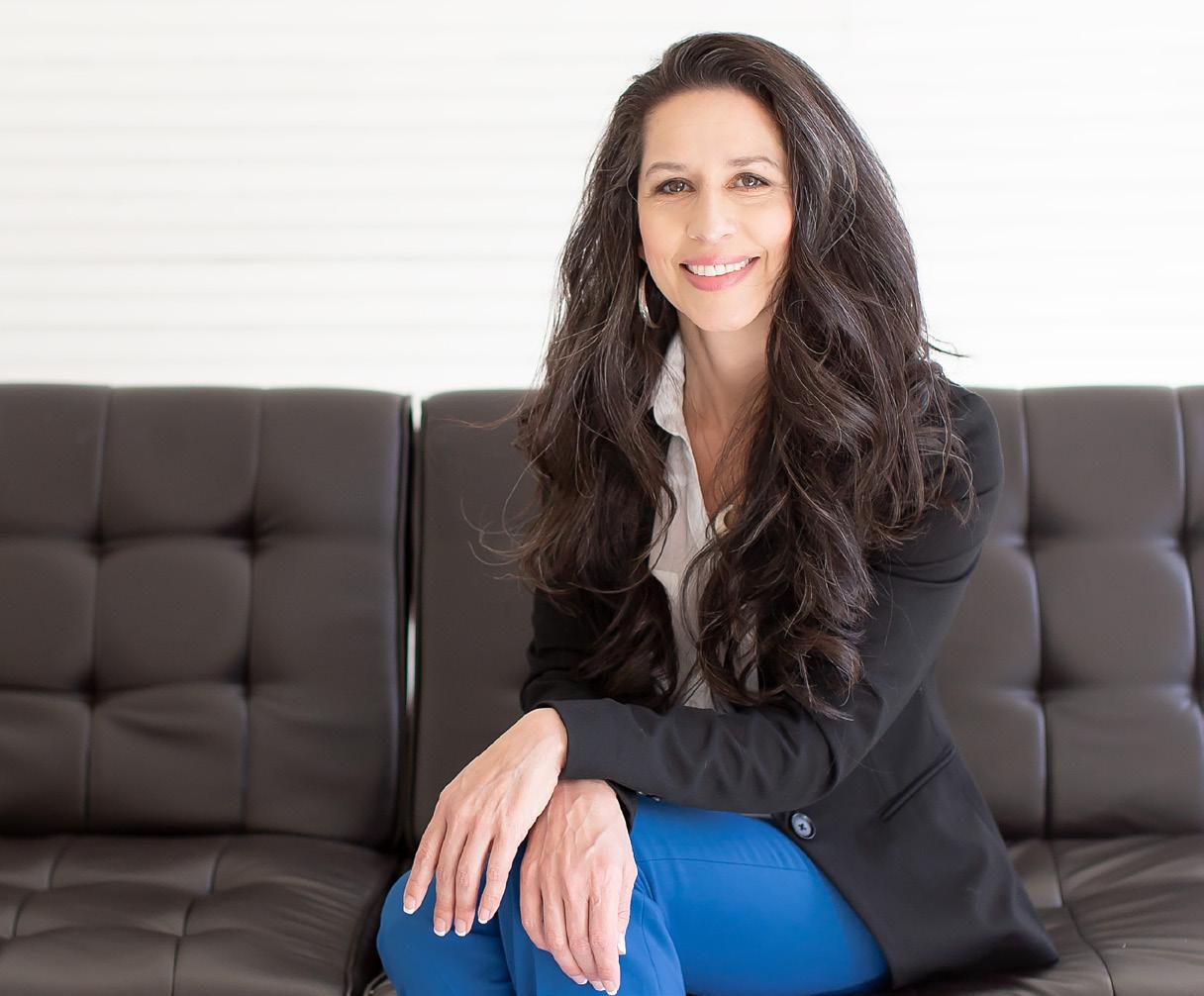
My successful match rate of 98% is not an accident. I put as much into my VA searches as some might into an executive search because I have selected to work in high quality, not quantity
not for the reasons many define leadership. She defines leadership as creating more leaders, great leaders. Leaders who may surpass her in business. “I saw this modelled in business and in sports. I think about Jack Welch, Dorie Clark,
Dale Carnegie, and Dan Gable. What these individuals accomplished was great, but when you think about how they were able to force multiply their ability to lead, that becomes an even greater legacy which lives on,” she informs.
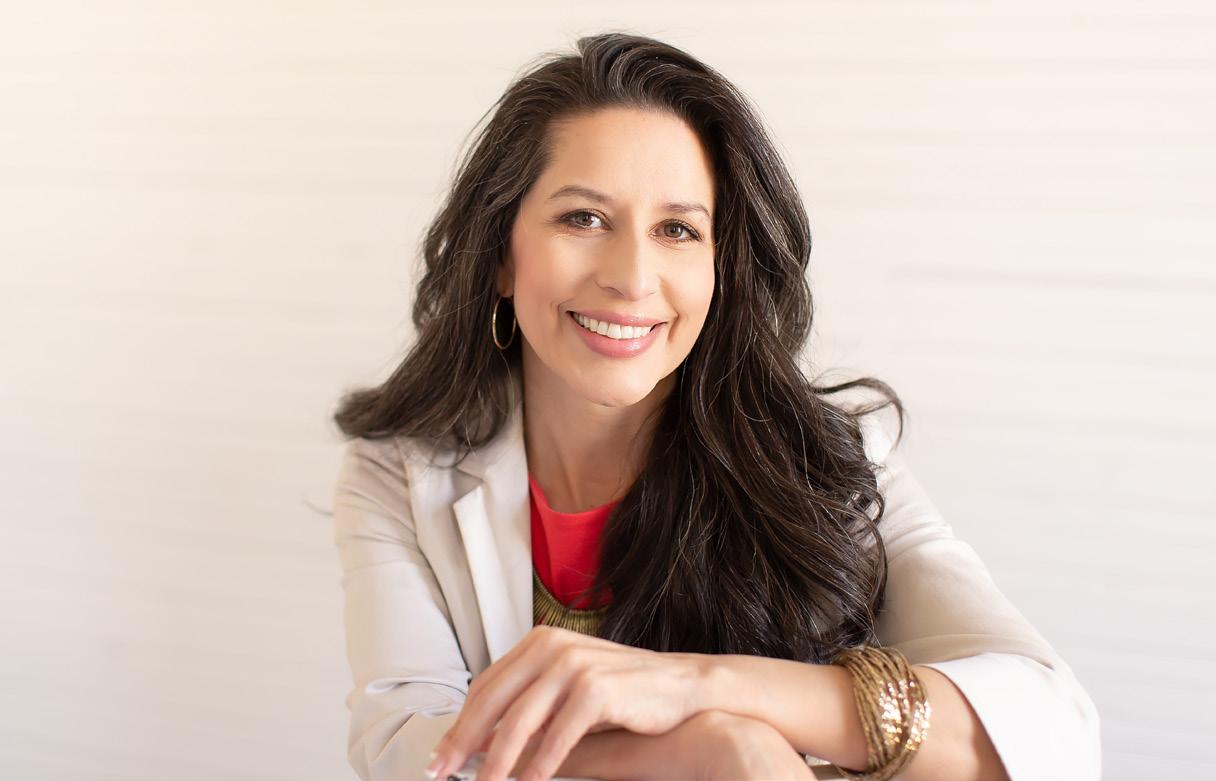
The number of VAs she has coached and the number of clients she matched with great success is what inspires others to join the AVA. She shares, “Leadership isn’t about me; it's always about the person I’m leading.”
Melissa started out in a role that matched clients to the right VA based on communication strategy and ideal client fit. As she gained years of experience, she understood the dynamics, perfected it and went on to write an interactive book about the detailed process. “My successful match rate of 98% is not an accident. I put as much into my VA searches as some might into an executive search because I have selected to work in high quality, not quantity. The turnaround time of my searches reflects the high level of service to meet the client’s needs,” Melissa explains.
At AVA, making a difference in the lives of others is what it’s all about. Following and staying in touch with virtual assistants helps the AVA understand their needs. Each time they reach a new milestone, the AVA celebrates with them. Other significant milestones that AVA recognises are when their work has been identified, be it through a feature in the list of business owners/entrepreneurs, Melissa receiving the Top Virtual Assistant Consultant of the Year award, or having Melissa’s books chosen to be a part of a college curriculum. As a business owner, she learned early on that recognition is essential and keeps burnout at bay.
Melissa believes that job satisfaction is very important. “I don’t have a typical day as much as a typical week. Putting too much emphasis on a single day of the week can
actually backfire. I see this all the time with my clients. Whenever I schedule anything, I look at my entire week. I intentionally create a life and do work that I don’t need a vacation from,” she explains. Keeping adequate free space on her calendar allows her to reset throughout the day if needed, giving room for opportunities and things to look forward to on one’s calendar.
Being a minimalist at heart, Melissa loves simplicity. “Anytime I can eliminate the need to make a decision that consumes energy but isn’t important, I’ve done myself a great favour. Unplugging from work is easy for me…now. I used to put so many more demands on myself. I’ve adopted the mindset that less is not only more, but it’s also better,” she says. Instead of merely scheduling appointments, Melissa truly thinks about how to schedule for success –this includes unplugging. Putting activities on her calendar naturally allows her time to unplug. When there is a lot to do, with a time of introspection, Melissa finds a way to get work done efficiently, taking lesser resources and time and getting it done to perfection.
The PVA, Melissa’s matchmaking company, sets itself apart from other companies with the level of service they provide, under the guidance of Melissa. “Since the beginning, I knew I wanted to focus on quality and stay clear of high volume. There is nothing wrong with a high volume business. It’s not what I’m attracted to, nor does it fit my lifestyle and business goals. I serve clients who not only appreciate a high level of care and service but are willing to pay for it. You can’t expect the Ritz services at Holiday Inn prices,” she explains.

Having written two books on Virtual Assistants, Melissa shares that it was a challenging process. Though research came quickly to Melissa, she was terrified of the release and readers' reaction. She had been writing articles and blogs on the topic for months, turning every client conversation into a study, searching for common questions, themes, doubts, and concerns. Eventually, all this information became an article or blog and finally, it was compiled for her first book, ‘Hire the Right Virtual Assistant’. “Writing was so easy back then. I actually miss that time in my business. Now that my business has grown and expanded, I don’t write every day. On the plus side, I’m no longer terrified to share what I write. Nor do I flee the country when a new book is released,” Melissa reminisces.
Soon enough, the book became popular among aspiring VAs, who reached out to her to thank her for her book. They were using it as a study guide with their clients. “Most of the books on hiring a VA are written by people who have never been a VA. It’s all business and no art. Certainly, they are not resonating with VAs. Being a voice for the virtual assistant industry as an assistant myself is an incredible honour,” Melissa shares. After releasing ‘Become A Successful Virtual Assistant’, Melissa was pleasantly surprised by how current VAs were levelling up their businesses. She intentionally wrote it for the new VA and was thrilled that VAs have been able to apply the business principles at every stage of their career. “The response of both have been great, and both were bestsellers. I still get messages and emails from readers, and I cherish each one,” she adds.

I serve clients who not only appreciate a high level of care and service but are willing to pay for it. You can’t expect the Ritz services at Holiday Inn prices
Being compared to men who were dominant in business, especially in the VA field and had farreaching reputations that surpassed Melissa’s own was and is real. “It’s also severely frustrating knowing how much more experience and knowledge I have in this area compared to them. However, I never focused on that because I didn’t want to lead from a place of frustration or anger. I have put the blinders on more than once, and it served me well,” she shares. To young women, she says, “Just remember you are always leading, and someone is always watching – even if you don’t know it.”
Currently, Melissa is working on updating Become A Successful Virtual Assistant and creating some online courses to take soft skills and make them into power skills. “I’ve been asked to do on-demand online courses for years but had no interest in them. My coaching is extremely bespoke, and I don’t enjoy online courses myself. I wouldn’t sell anyone anything I wouldn’t or haven’t bought. These will be different from what’s out there because the focus isn’t on me. The focus will be on the student. The world doesn’t need another version of me. The world needs the best version of every unique person, and that’s what I’ll be teaching,” Melissa shares.
Currently, Melissa is working on updating Become A Successful Virtual Assistant and creating some online courses to take soft skills and make them into power skills

A financial services industry professional with more than four decades of top-level international experience, Nigel Green’s over-arching mission, is to help expatriates worldwide reach their long-term financial goals through the powerful combination of personal financial advice and innovative digital solutions. Nigel originally formed the powerhouse that is deVere back in 2002 offering bespoke financial advisory services such as insurance, lowcost investment solutions, asset management, online banking and fintech solutions. He embraces new disruptive technologies and is an advocate of pioneering fintech solutions as is evident by the Crypto, Venture capital and NFT investment platforms offered by his company.
 Nigel Green
Nigel Green
The fintech revolution we’re witnessing is unstoppable. The financial services industry is experiencing its most profound transformation ever. And it’s all down to fintech.

Financial technology, or fintech, is the use of tech to provide financial services to consumers, and is redefining and reshaping the sector at lightning speed and in a major way.
The growth is being driven by skyrocketing investment into the sector. In the second half of 2021 alone, global fintech investments recorded $210 billion across 5,684 deals (venture capital, private equity, and mergers and acquisitions), according to KPMG findings.
In addition, investor interest in crypto and blockchain was particularly high, but the range of fintech services continues to expand. The most popular fintech investment last year was the payments sector, attracting $51.7 billion.
“Investment in the payments space continues to boom, both in mature markets like the U.S. and U.K. — and in emerging markets like Africa, Latin America, and Southeast Asia. Throughout 2021, there’s been an extraordinarily high level of VC investment due to the nature of the global economic recovery combined with the digital transformation that has been accelerated by Covid-19,” stated Courtney Trimble, KPMG’s global leader of payments.
This trend is set to continue, even accelerate further, in 2022 and beyond. Indeed, the world’s
top 100 fintechs already have a value of $2.7 trillion, they’ve proven themselves and they aren’t going anywhere.
I believe there are three key reasons why fintech demand will continue to soar in future.
First, clients. More and more clients want all their financial services requirements to be managed online or via mobile apps. It’s all about instant access, 24/7, from anywhere in the world.
Second, financial inclusion. Fintech offers safe, secure, convenient and affordable global digital payment. I believe 2022 will be crucial in the fintech revolution, as lawmakers and regulators step up their focus on catering to vulnerable parts of the economy, scale up production and research and
development to bolster an increasing number of fintech transactions.

Third, businesses. Fintech offers companies cutting-edge ways to diversify, reduce costs, enhance the client experience and meet regulatory requirements.
Looking to the future, crypto and blockchain will continue to transform fintech. Bitcoin, the world’s largest cryptocurrency, has become an increasingly mainstream part of the global financial system. It is now legal tender in El Salvador and the Central African Republic, with many more set to follow suit this year, say experts. In addition, more and more central banks are looking to create CBDCs (central bank digital currencies).
Bitcoin isn’t just about offering typically good returns on investments, it’s also a force for social good, providing an exit from both financial and political repression. It can act as a shield against hyperinflation, and unlike fiat currencies, Bitcoin can’t be manipulated by modifying rates or increasing quantitative easing. Crucially, Bitcoin’s supply cannot exceed 21 million, so, in essence, it’s practically devaluation-proof.
Furthermore, in terms of financial inclusion, Bitcoin plays a massively beneficial role as it can be sent safely and securely, with no censorship, helping the 1.7 billion global ‘unbanked’ population
Consequently, as a long-time supporter of fintech, this lightning progression is an immensely positive force. It has the potential to make a fundamental difference to billions across the globe. It’s helping to create an ever more connected world, allowing more people than ever before to achieve their financial ambitions. It has the power to create a better tomorrow.
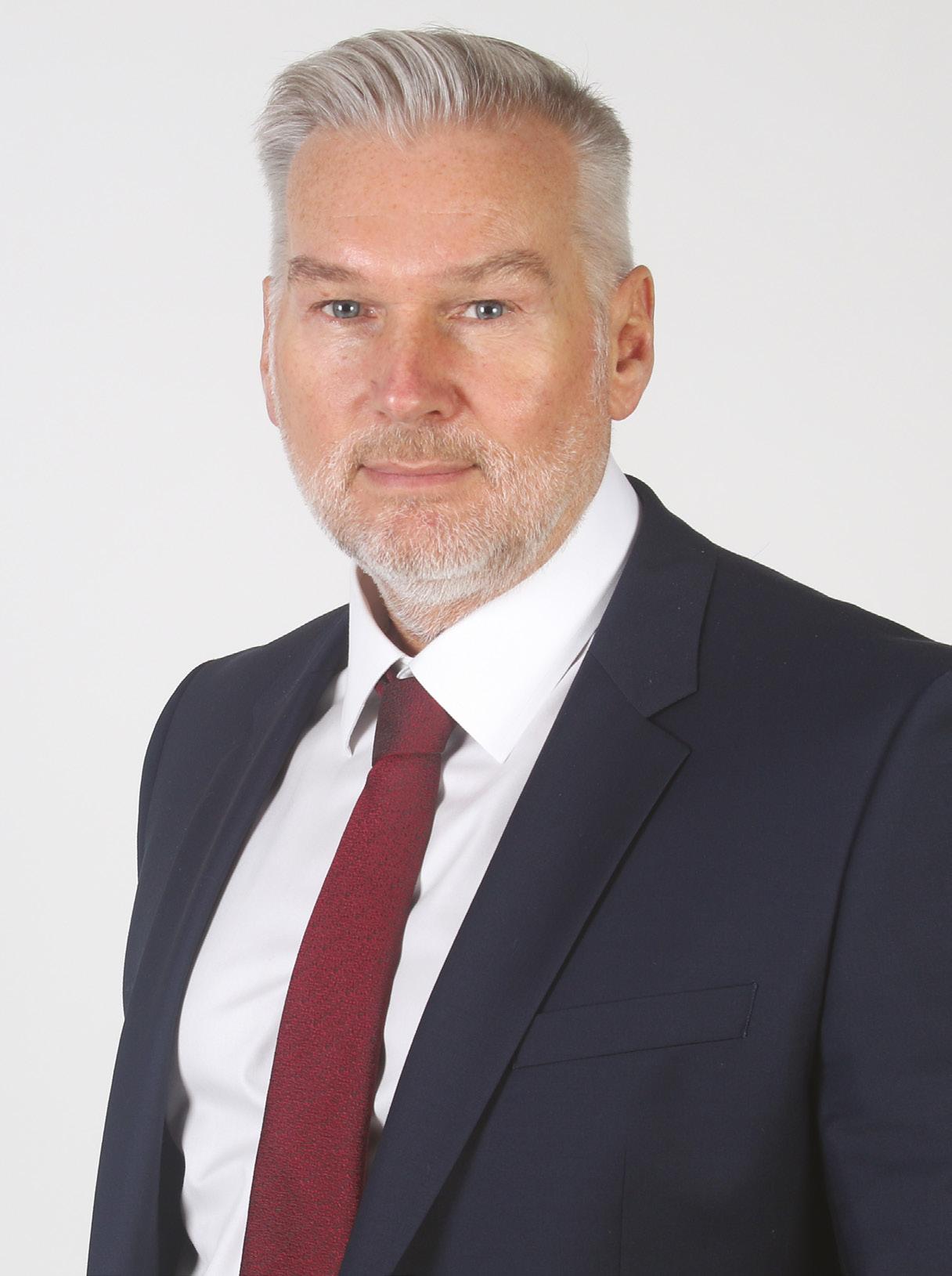 Paul H. Jones FRSC
CEO, Bitrez
Paul H. Jones FRSC
CEO, Bitrez
The qualities of a leader are numerous. From being open-minded to strongheaded, one needs to possess a long list of traits to be a great leader. In a corporate space, these traits take precedence over other matters. Mr. Paul H. Jones, the CEO of Bitrez, embodies these traits and leads by example to be ethical, honest, and have an open business culture. As a director, he is responsible for leading the organization and has a duty to make informed decisions and exercise reasonable care, skill, and diligence.
By remaining active in the business and leadership, Mr. Paul drives the strategy of 3 cutting edge businesses, ensuring financial security, and articulating a vision of regulatory compliance, green chemistry, and improved performance, delivering both health and environmental benefits by using his technical skills, management, and leadership. Through
strategic review and cognitive research skills, he is involved in deciphering data from regulators that create opportunities in the market.
"While responsible for key decision making, I also involve the team while providing insight, influence, and guidance. Having worked through the ranks, my understanding of each function allows me to lead with clarity and consideration for the problems individuals/departments face. This awareness and depth of understanding enable clear communication of concise and digestible information," Mr. Paul says.
Mr. Paul believes that progress is achieved through multidisciplinary collaboration, always focusing on the end goal. He encourages learning and education, both internally and externally, as he desires to see his employees evolve and achieve their full potential. "My door remains open to all, and I try to assist whenever I can. The unusual path I have taken and the resultant
success from these endeavors confirm that with the right drive and determination, and maybe just a little luck, anyone can be successful," he shares.
As a young man, Mr. Paul was branded a natural leader, be it in the classroom or some sports event. But the same traits that he had were coupled with an inherent tendency to be slightly rebellious, which he feels contributed to him seeking out employment early in life. Fortunately, at the tender age of 17, he started working at the laboratory of a chemical plant and immediately realized his aptitude for the products, production, and all the associated systems. Demonstrating this propensity for chemistry and manufacturing coupled with having high energy, drive, and determination, he was quickly promoted

through a series of positions in the business. Before reaching 20 years of age, he commanded the respect of the workforce and was made responsible for the site, and shortly after that became a director and shareholder.
His leadership and entrepreneurial nature supported Mr. Paul through global travel and the development of the business's reputation, thus preparing the groundwork for future growth. In 2021, he was the recipient of the Royal Society of Chemistry, Chemical World Entrepreneur, for his confidence in his entrepreneurial approach to business and life. Mr. Paul's initial business ownership started when he was given shares in place of significant financial offers from large multinational companies. "Through interfacing with the chemical subsidiaries of oil Companies, I was approached, receiving attractive offers
By remaining active in the business and leadership, Mr. Paul drives the strategy of 3 cutting edge businesses, ensuring financial security, and articulating a vision of regulatory compliance, green chemistry, and improved performance, delivering both health and environmental benefits by using his technical skills, management, and leadership
to lure me into the oil sector. However, with a combination of strong loyalty, appreciation, and respect for my colleagues, coupled with a better the devil you know familiarity and the belief that the opportunities unfolding before me would lead to success, I elected to remain at Bitrez and became a shareholder,” he says.
As the company grew, Mr. Paul started creating different opportunities for innovation within the company. Within Bitrez, he developed the innovative ICHEME and Queens Award-winning products for the packaging sector. In 2012, they also set up Anacarda Limited, another Queens Award-winning business, as an offshoot that focuses on polymers from sustainable resources. This business utilizes the Bitrez manufacturing plant and is derived from some technology developed by Chemical Processing Services Ltd [CPS], a personal consultancy business used to
house Patents and the IP he has generated. It also offers technical support, licensed deals, and specialist contract manufacturing arrangements.
Bitrez is a specialist design, development, and manufacturing organization aiming to continue to innovate new materials and pioneer lower hazard polymers from sustainable feedstocks. "We have established ourselves as the UK's leading specialty thermoset resin producer, and we export worldwide. Our vision is to take new technology to various regions to allow overseas domestic manufacture through licensing and contract manufacturing agreements," shares Mr. Paul.
The company saw significant growth and ensured a steady income by aligning with market leaders. With a vision based on innovation, Mr. Paul wants to grow the business to greater
heights. Through CPS, Mr. Paul patented some new chemistry for sustainable-based thermoset products. Following the United Nations Sustainable Development Goals [SDG's], Bitrez has made provisions for materials with high Bio content, improved safety status, offers technical enhancements, and through an optional license arrangement, can be processed domestically to spread the wealth and minimize the transport carbon footprint, and reduce costs.
Bitrez is a sustainable, multi-million-pound business that has secured employment for over 100 people, of whom 75% are chemists, engineers, or technicians. For several years the company hovered with a turnover of around £25 Million before introducing a continuous 24/7 operation to increase capacity. The turnover in 2021 has increased by over 40% to just under £33 Million. In addition to the financial success, they have also received outstanding recognition, securing

many awards and being introduced to numerous collaborative projects with esteemed research institutes. The Anacarda business has also proven immensely successful and was selected by the leading Marine Paint manufacturer to be utilized as the material of choice in their next-generation coating systems. This, in turn, has led to year-onyear growth and increasing return. Finally, the third business, CPS, was recognized as the startup Company of the year in the ICHEME Global
awards and has also seen excellent growth. With 3 Global Patents granted and more pending, this business is expected to proliferate through license deals.
Bitrez Ltd maintains an enviable reputation for resolving technical issues and enhancing the performance of products so that they will last longer, go further or faster, withstand operation in adverse conditions, or meet problematic customer or market requirements. Thus, making them a unique player in the manufacturing industry. For almost 40 years, they have been formulating products and providing solutions that allow customers to create or enhance their product range. By constantly developing or improving products to meet increasingly demanding regulatory restrictions, Bitrez ltd maintains a sense of consciousness and consideration of existing threshold limits and takes steps to avoid product development that includes regrettable

Bitrez is a specialist design, development, and manufacturing organization aiming to continue to innovate new materials and pioneer lower hazard polymers from sustainable feedstocks
substitution. "We have strived to generate safer and cleaner products through our innovative approach, enhancing performance to ensure that our customers can maintain a competitive edge. We have supported market leaders with our specialty polymers through selective strategic alliances to ensure that they maintain this prominence. We look to increase commercial value through innovative solutions and provide products whose performance adds value," shares Mr. Paul.
Bitrez Ltd understands the importance of the satisfaction of their customers. Through innovation and out-of-the-box thinking, Bitrez’s approach comes in many guises that include blue sky development of new products and improving existing products by cleaning them up on a structural basis. This allows customers to receive suitable material to continue their operations, differentiate from their competitors, and gain more significant market share or value.
Building a business can take a lot of time and patience, let alone resources, perseverance, and the will to keep pushing forwards. In Mr. Paul's case, he decided to do this with 3 businesses, which stand at an incredibly successful level today. But he did have his stumbles. He says that constant care for the company put him under a lot of stress, which he gracefully handled and came out of. "I have faced adversity that has manifested itself in shortages of resource or material, financial burden, or cash flow or finding it difficult to achieve a specific requirement. My extensive travel around the globe was not without events, and I have been fortunate enough to have narrowly evaded injury being present
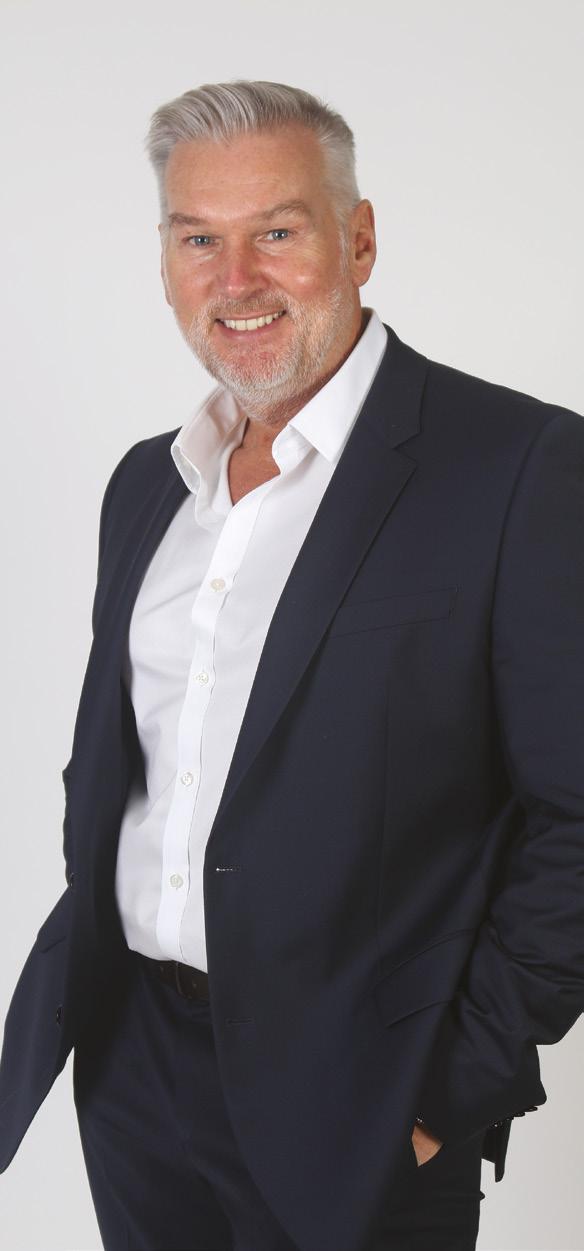
during explosions or gunfire in either hotels or during transit with events in Macedonia, Russia, Indonesia, Africa, and Belgium, to name a few. While I may have been lucky, this caused distress for friends and family and is something I am now much more conscious of," he shares.
Today, experienced people in place in all aspects of the target regions certainly help to reduce the workload. Mr. Paul believes that problems
and it goes without saying that there is a need for various skill sets. Business is about people, and I value loyalty above all else. I have been privileged enough to amass a team of specialists with outstanding character, and they form the core of the business," says Mr. Paul.
Having been involved in all departments and historically being the author of many of Bitrez’s systems, Mr. Paul recalls his time as the Operations Director, obtaining BS 5750 and subsequent ISO 9001/14001/45001 certification standards for Quality, Safety, and the Environment. He was summoned to receive the British Safety Council Sword of honor and, with invitations, to Buckingham Palace, Windsor Castle, and the Mayor's Mansion, all featuring as very memorable occasions. "I feel privileged to have exceeded my aspirations and have been more successful than I may have hoped or expected to have been. I have my health, and I am comfortable, and I take great pride from having been able to provide for those closest to me," he shares.
and adversities built character and subscribed to the belief that overcoming hardship and difficulty makes the final success more rewarding. "The measure of someone is surely their response in the face of adversity, not a success, and I know my team faces problems head-on, and through their guile and determination, they always find a way to succeed. My business has technical demands,
Currently, Bitrez Ltd works towards creating sustainable options in their services. They have been responsible for troubleshooting and resolving customer or market issues that come with technical demands, safety issues, and changes in legislation. Additionally, they are also working with providing products for specialist coatings serving the packaging food sector, marine, and industrial markets, and we produce Matrix systems for composite applications. "While we have established products derived from sustainable feedstocks, it is only more recently that these materials have gained an
Bitrez is a sustainable, multimillion-pound business that has secured employment for over 100 people, of whom 75% are chemists, engineers, or technicians
unprecedented level of traction as there is greater environmental concern and awareness from all quarters. Our products are not only derived from sustainable materials, but many are used in the manufacture of parts for equipment that is used to harvest clean energy, as well as systems for electricity transmission and distribution," shares Mr. Paul.
The company is also working on licensing arrangements for products that aid the supply of materials that can help generate green energy or are utilized to manufacture lightweight composite parts to efficiently use this green energy. This includes systems used in the manufacture of electric vehicles or encapsulate, fix, and protect electronic components from their environment and provide insulation and mechanical performance to overcome stresses and cyclic fatigue.
The chemical industry has played a big part in climate change, and with the Net Zero target in sight, there is a need to rectify the damage caused. While there is a global requirement to address Carbon neutrality, we need to stand together as innovators, entrepreneurs, and leaders with a history of embracing a challenge. Bitrez Ltd continues to use disruptive chemistry to develop
products to help mitigate climate change. This is but one of many requirements needed to satisfy the UN Sustainable Development Goals. While these goals are all-encompassing and provide a framework designed to address a global imbalance regarding social and economic discrimination, they encompass numerous targets to help protect our planet. Their plans include helping resolve these issues and providing a means to ensure carbon neutrality is a reality.
As an experienced person in the field and in leadership, Mr. Paul shares his thoughts for the future CEO of the world. "I believe we generally excel at what we enjoy doing, and I would advise any aspiring business leader to be focused on their core strengths and work hard. This is easier when young and comes with a note of caution as years pass by. The second part of the advice I would offer would be to try and recruit and develop a trustworthy team and empower them to express themselves. The fast-paced nature of our industry and the dynamics of today's business require an understanding of the regulatory and geo-political landscape and current and future technology, all used to determine the innovative development required to stay ahead of your competition. This is not an easy task and takes time, effort, and a sprinkling of good fortune," he concludes.
Bitrez Ltd continues to use disruptive chemistry to develop products to help mitigate climate change. This is but one of many requirements needed to satisfy the UN Sustainable Development Goals




From getting a Political Science degree and aspiring to be the President of USA, to becoming Executive Vice President and Partner of a renowned construction firm called Friede & Associates, Scott Truehl’s journey is inspiring and filled with learning. “I have been incredibly lucky with my career and had great mentors and people who gave me chances to grow, succeed, and fail,” shares Scott. Since childhood, Scott was never afraid of challenges, doing things in unique ways, or dreaming big.
Speaking about ambitions, in high school, Scott thought he wanted to become the President of the US. That’s huge, right? Well, to get that political career started, he spent two years working part-time in the Wisconsin State legislature during his college days. From there, Scott then served as the Governmental Affairs Director of the Madison Chamber of Commerce for six years and realized that he really enjoyed
working with the business community instead of working in the political arena. He then joined Wisconsin Power & Light (now Alliant Energy), a growing regional gas & electric utility and held several leadership positions in Economic Development, Local Field Operations, Director of State & Local Governmental Affairs for the next eight years.
“During my last couple of years working with community economic development agencies, I assembled a group of general contractors to help me put together building proposals for many of my prospects looking to locate in Wisconsin. A number of these firms offered me a chance to join them, and here I am,” reveals Scott. An upward career trajectory such as his is worth taking notes from.
In 1945, Friede Brothers started its journey as a hard bid governmental and commercial general
contractor serving a 30-mile service area. More than 40 years later, the company switched gears, and changed its focus towards design-build projects, and took the name of Friede & Associates. This was when Scott joined the company as its Executive Vice President & Partner.

“What really excited me about Friede & Associates was the sense that I could really make a difference,” says Scott. Roger Friede represented the fourth generation of his family
to run the company, so he knew the company had the staying power to be successful. What Scott brought to the table was the vision and uniqueness that would make Friede & Associates stand apart from its competitors. Scott adds, “We discussed how together we could create a professional services company that could help businesses looking to expand with much more than just building or renovating their buildings. We knew we could do much more.”
Based on his previous experiences as a realtor, city council member, and economic development specialist, and, Friede & Associates’ 40 years of commercial experience, Scott, and his team noticed that building is just one part of the overall expansion project for their clients. Pointing out client limitations, Scott says, “We realized that for most of our
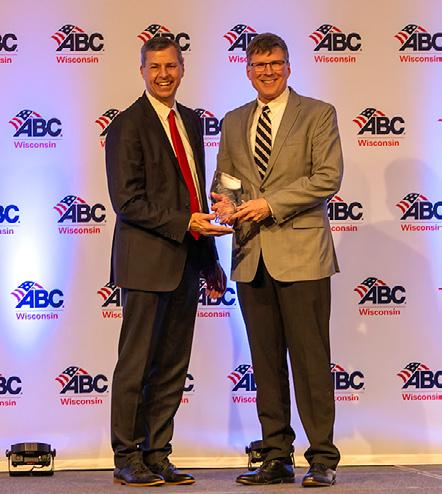

clients, the building is the largest investment they will ever make, and most of them have never done it before. So this is where we come in. We can take the entire burden off our clients for the construction process so they can continue to focus on their business.”
Today, under Scott and Roger’s leadership, the team of Friede & Associates is helping clients every step of the way - right from finding the right site to constructing their building, to arranging financing, to building the building, and so much more in the middle.

“I see my role as helping show our team where we are going and how they can make that happen,” mentions Scott. When it comes to his leadership style, Scott is a hands-on leader who invests himself in the day-to-day needs and operations of the business. Most days you will find Scott kneedeep in conversation with either project managers or estimators, or key subcontractors, trying to find the best building solution for their clients and partners. These discussions revolve around the challenges they are trying to work through on specific projects, and the variety of potential solutions. From a team’s point of view, this is extremely important: being heard and understood. Hence, Scott’s team knows that they can approach him for assistance and support at any time.
One of Scott’s “catch phrases” is “bad news doesn’t get better with age.” “By this, I mean don’t put off the tough calls to our customers or being hesitant to bring my partner or me in on issues early if they need help. We can help work through the problems and get to solutions, rather than having an issue continue to cause problems and affect everything else they or our crews are doing,” explains Scott.
Scott is an early riser. His typical day begins at 4:45 a.m. and then includes a 75-minute commute to the office. On his drive, Scott typically handles calls from subcontractors and field supervisors who are just getting to their job sites and are looking to discuss their work for the day. “Typically, I split my days evenly between meetings in my office, at client or prospects offices, or on our job sites,” shares Scott. He is the type of leader who makes every minute count. His day usually wraps up in the office
between 5:30 - 6 p.m. and Scott heads back home and wraps up the day by getting updates on his projects or communicating with clients. Scott then catches national news on the radio or listens to audiobooks or podcasts to always be learning and to wind down his day. It is his way of striking a work-life balance.
“We immediately identified and invested in the technology we needed to operate completely remotely,” claims Scott. During the pandemic, Roger & Scott held a quick 30-minute meeting each day with the office staff to stay connected and to deal with the numerous issues that the team faced each day, in both their personal and professional lives. Sometimes, they were about the pandemic, how supply chain breakdowns were affecting their jobsites and other days the discussions focused on how the team dealt with home-schooling and remote learning for their children. Towards the end of the morning huddle, everyone shared their work plans, objectives to be achieved for the day, and if any assistance or inputs were required from other team members.
Moreover, all the superintendents from various projects sites we also asked to join the call once a week to keep everyone in the loop about what challenges they were facing in the field. “By taking these actions, we could keep everyone in our company informed of what was going on and let everyone know that we all were in this together and each of us was dealing with unique challenges,” continues Scott.
A few years back, Scott and his team of Friede & Associates took on an ambitious project in the Wisconsin Dells. This project involved
Today, under Scott and Roger’s leadership, the team of Friede & Associates is helping clients every step of the way - right from finding the right site to constructing their building, to arranging financing, to building the building, and so much more in the middle
constructing an indoor go-kart track and an amusement center in a building that would fit within the three wings of a large resort. They were also required to create an indoor/outdoor pool and swim-up bar in an adjacent waterpark at the resort. All the construction would replace a large outdoor pool and deck area surrounded by guest rooms. Their main challenges, according to Scott, were an operational deadline of 6 months (November to May), restricted 5 days working along with late morning shifts starting after 9.00 am. To top this off, the crews faced record snows and frigid temperature for the entire month of January.
Soon after its completion, a state construction magazine wanted to do a feature story on Friede & Associates and the project, where Scott, the project manager, and superintendent were interviewed and questioned about their


challenges. “As I was thinking to myself of all the challenges and hurdles our team had faced, I suddenly realized that the other guys were still sitting silently and looking at each other. I spoke up and said, “guys, what do you think?” They smiled back and said, “Hey, it’s what we do. We’re used to doing the weird and exciting projects like this.” And that was the moment that our “We Do Weird Well” tagline was created. “Anyone can build a box, but We Do Weird Well,” says Scott with a smile.

Now, Scott’s number one priority is recruiting employees and adding them to the company’s foundation. For Friede & Associates, numerous opportunities are coming their way, but the limited staff is posing a hurdle. Scott actively converses with high school industrial arts students and makes them aware of the construction industry’s benefits and avenues as a career. From conducting job fairs to posting job vacancies on recruiting sites, to talking with head-hunters and some of his key trade partners, Scott is leaving no stones unturned in finding the future workforce.
Scott says, “While most construction firms cut back on their sales & marketing expenditures during the pandemic, we opened a new satellite office in Madison in September of 2020 and added sales & marketing staff.” Today, they are witnessing this investment’s first-hand benefits, opening doors to multiple avenues for growth and expansion. In this regard, Friede will continue to hire and build their talent pool in the coming years.
Over the years, Scott has learned many important lessons on what it takes to be a leader. He suggests,
Teamwork is more paramount in the construction industry than in other sectors. Therefore, Scott’s idea is to hire the best team and take every possible measure to help them get better
“First, realize that you cannot do everything yourself. You need to surround yourself with the best team you can and then do everything you can to get out of their way.” Teamwork is more paramount in the construction industry than in other sectors. Therefore, Scott’s idea is to hire the best team and take every possible measure to help them get better.
Sharing an anecdote about his initial days in the company, Scott says, “When I first got to Friede, I used to go out and work as a laborer on our jobs, helping place concrete or help with demolition or basic carpentry. After a few minutes, when the guys realized I was there to work, it was amazing to see how they let down their guard and talked about ways we could improve as a company and about things they didn’t like or understand about their jobs or processes.” Therefore, Scott asserts that getting out of the office and talking to employees on the job sites is essential.
Scott recommends young leaders never stop the learning process and continue to strive for growth opportunities. In today’s marketplace, someone is always doing it better, faster, or more economically. Hence, one must never get caught thinking they are the smartest in the room. And if so, find a different room. Lastly, Scott asks the leaders to never be afraid of knowledge sharing with industry peers. A healthy exchange of thoughts and experiences benefits everyone. This also increases possible collaborations and helps build a community network. To this end, Scott was also involved in the creation of the Construction Leadership Network, and international group of contractors that meet annually to share best practices and to support others in the industry. Scott’s a regular presenter at these conferences on topics ranging from sales training, to working with realtors & developers to creating a positive work culture… truly a man who walks the walk when it comes to helping others in the construction industry.
Scott recommends young leaders never stop the learning process and continue to strive for growth opportunities. In today’s marketplace, someone is always doing it better, faster, or more economically


Mel Migrino is the Vice President and Group CISO of MERALCO, the largest Power Distribution Conglomerate in the Philippines. She is part of the Executive Committee of the ASEAN CIO Association. She is concurrently the Chairman and President of the Women in Security Alliance Philippines (WiSAP). She has been cited as 2022 Influencer by the International Security Journal and has been recently cited by Technology Magazine, Energy Digital and Cyber Magazine as a leading CISO among global cybersecurity leaders and a regular contributor in Women in Security Magazine in Australia. She is the former Cyber Security Leader of a Big 4 auditing firm and the largest fintech in the Philippines. She has more than 15 years of combined experience in Cyber and IT Governance, Application and Infrastructure Security, Operational Technology (OT) Security, Business Continuity, Privacy, IT Audit, Project Management across multiple industries. She led the PCIDSS Certification for the largest payments network in the Philippines. Further, through her leadership, Meralco’s Fintech Subsidiary, Bayad won the W Media Awards for Southeast Asia under Cybersecurity Implementation on 2021.

Supply chain ecosystem is a network of people, applications and systems, governance processes, workflows and devices to enable to procurement and use of required products and services to meet certain business requirements towards achievement of overall business objectives. In this age of digital transformation happening in enterprise and operational technology triggered by the challenges in this pandemic,
paved the way to streamline operations, develop platforms that are within the reach of your customers and allow hyper personalization to adjust to the changing lifestyle, more and more integration points and collaborations from third parties emerged and are making progress to enable faster data exchange and seamless processing of online transactions. This progressive change led the way to expand the attack surface. The trust that was

initially founded on a few vetted processes and technologies has now expanded to business groups where we have no concrete visibility on the depth of the data protection controls and risk management processes that are ingrained in the business-as-usual activities.
A common yet high risk attack vector is the software supply chain platform that fits within the Technology organization. The IT supply chain is the network of principals, distributors, and resellers that participate in the sale, delivery, and production of hardware, software, and managed services. Software supply chain attacks usually require strong technical aptitude and time, so they are often difficult to execute. These attacks aim to compromise trusted relationship and brand in which threat actors infiltrate a malicious script to exploit and access an existing trusted connection that the third party has with the target organization. Some of the less complex types of software supply chain attacks includes modifying open-source code or app store attacks. In general, advanced persistent threat (APT) actors are more likely to have both the intent and capability to conduct the types of highly technical and prolonged software supply chain attack campaigns that may harm the greater majority.
follows:
● Hijacking - Software receives routine updates to address bugs and security issues. Software vendors distribute updates from centralized servers to customers as a routine part of product maintenance. Threat actors can hijack an update by infiltrating the vendor’s
network and either inserting malware into the outgoing update or altering the update to grant the threat actor control over the software’s normal functionality.
● None performance of Code signingThis aims to validate the identity of the authenticity of the code/ author and the integrity of the code. Attackers undermine codesigning by self-signing certificates, breaking signing systems, or exploiting misconfigured account access controls. Threat actors are able to successfully hijack software updates by impersonating a trusted vendor and inserting malicious code into an update.
● Compromising Open-Source CodeThis occurs when threat actors insert malicious code into publicly accessible code libraries, which unsuspecting developers—looking for free blocks of code to perform specific functions— then add into their own third-party code.
To prevent the occurrence of this type of attack, organizations should :-
1. Implement an organization-wide program for supply chain risk management
- This includes executives and managers within operations and personnel across supporting roles, such as IT, business teams, procurement, legal, risk management, and security as these roles can influence risk mitigation across suppliers’ pool through due diligence and contracting activities
2. Document and roll out a set of cybersecurity requirements for suppliersThe complexity of the control requirements may vary on the nature of the project.
3. Put in place a secure system development lifecycle policy and standards - Adopt the Security by Design as a software development practice especially for high value assets. Vendors should incorporate security features in their software design plans. Customers can assist by communicating security requirements to their vendors.
4. Perform Binary Code Scanning to carefully assess the patch or update from the vendor - This could be an expensive investment, but it is all worth the effort. For this to work effectively, this cyber technology must be neatly integrated with the patch management standards and procedures of the technology and cyber teams.
5. Require a regular updated of the software component inventory that states the components and other attributes of delivered software developed by the third parties.
6. Proactively identify threats and vulnerabilities of software and 3rd parties thru the use of threat intelligence to enrich decision making. Identified indicators of compromise must be defined and blocked in various cyber technology platforms and should be reviewed in a periodic basis.
The end state is really to have a resilient supply chain that empowers people to make objective and wise decisions that will yield to greater efficiency and success in the procurement and production lifecycles. Organizations should be agile enough to quickly pivot as business direction evolves and resilient enough to withstand potential challenges that may emerge.
Advanced Persistent Threat (APT) actors are more likely to have both the intent and capability to conduct the types of highly technical and prolonged software supply chain attack campaigns that may harm the greater majority


